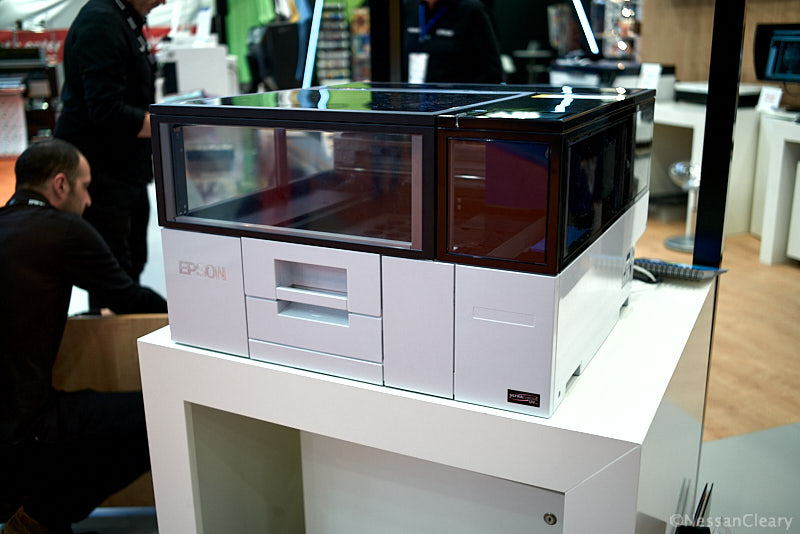Large format printers offer a versatile way to diversify a business, particularly in uncertain economic times. This article explores a range of opportunities, from traditional signage and out-of-home advertising to specialised markets like textile printing, wallpaper, and direct-to-object decoration. The key is to leverage the printer’s versatility and invest in the appropriate finishing equipment.
There’s no doubt that we are living through uncertain times, with slow economic growth that affects all nations and all market areas. Even if you are busy with a full order book, there is always the danger that you could be hit by a sudden slow down in work. And of course there are logistical challenges to shipping, an uncertain international trading outlook and persistently high inflation.
So it makes sense for anyone working in large format to look for further opportunities to diversify their business. And fortunately large format printing machines are extremely versatile, and most people working on the sector are quite creative when it comes to offering new solutions.
In some cases, this is just a matter of looking for new applications that can be satisfied with the same equipment. But there’s also a case to be made for investing in new kit to address new markets. It largely depends on the routes to market you already have in place, and whether you are addressing business or consumer customers, and therefore how adaptable your sales force and ordering system might be.

So for this story we’ll outline the various market sectors that together make up the large format world. Readers can then judge for themselves if there are areas that they could easily further diversify into. Most wide format printers can handle a remarkably diverse range of substrates, so the same kit can address many different market opportunities. This is especially true of printers UV-curable inks, which will adhere to virtually anything from paper and plastics through to wood, metal, glass and even concrete. The main alternative is latex, also known as resin ink, which usually works with a primer to give it a similar versatility. And since resin ink is water-based, it also helps tick the sustainability box that is becoming increasingly important to corporate customers.
This versatility means these printers can handle a huge range of different applications from general signage and display graphics, both indoors and outdoors, through to product decoration and industrial uses such as printing instructions onto metal panels. Typical wide format opportunities include in-store point of purchase displays, exhibition graphics, banners, flags and vehicle wraps. And wide format printers are also used for consumer applications such as producing photo panels, commemorative plaques, stickers, wall coverings and posters.
However, it’s worth remembering that although the printers can handle a very wide range of different substrates, you’ll likely need more specific finishing equipment to convert the prints into their final applications.
There is some argument that out of home advertising is moving away from prints to digital screens, but these screens also represent an opportunity; it’s a different technology but the same market. This is especially true now that they are becoming widespread in small towns as well as big cities. Besides the bigger implementations, such as in shopping malls, typically involve a hybrid approach with both screens and prints.
Large format also has a role to play in wallpaper production. HP has had some success in marketing its latex printers as an environmentally-friendly solution for this market. Canon has also pushed its Colorado printers into the wallpaper market, and created a turnkey solution in partnership with Fotoba. More recently, Roland DG has acquired Dimense, which produces textured substrates that can be used in both packaging and wallpapers.

There are also a number of roll-fed textile printers that are designed to print direct to fabric. This involves specialist inksets for specific materials, such as cotton or silk. Much of this market is moving to pigment inks that can be used with a wide range of materials and are currently used for some apparel but more commonly for furnishings and home decor.
At the other end of the scale, there is direct-to-garment printers that print to t-shirts and other small fabric items. And of course, there is also direct-to-film, which prints a graphic to film that can be transferred via a heat press to a textile at a later stage. Both DtG and DtF require only a relatively small investment, though many favour DtF because it has a much higher output, which can offer a better revenue stream.
There is a growing market in decor, sometimes also referred to now as direct-to-object. Those items that feature a relatively flat surface, such as smartphone cases, can easily be printed via a small format flatbed. Some devices, such as Epson’s desktop V1000 are ideally suited to small gifts and promotional items, while Roland DG’s VersaObject printers will print to objects up to 242mm high. There’s also a number of direct-to-shape printers that can add graphics to cylindrical objects such as mugs, drinks bottles or even candles.

So far we’ve just looked at output devices, but to access these markets you have to think about the input, which comes down to the customer-facing ordering system. There will always be business customers that require a sales rep to visit and advise on the different options. But in most cases you will need a portal tailored to the expectations of the potential customers, matched by a marketing campaign that reaches those customers. Ideally this should be integrated to the production workflow to generate accurate quotes and faster delivery.
Finally, it’s worth noting that there are opportunities beyond the traditional large format printing. Anyone who has been to a recent Fespa trade show will have see some exhibitors showing label printers and even some packaging machines. Ultimately these print markets require the same skillset in terms of acquiring orders, pushing them through the print queue and converting the prints to finished jobs. In any case, diversification offers the best way to survive today’s uncertain economic conditions.